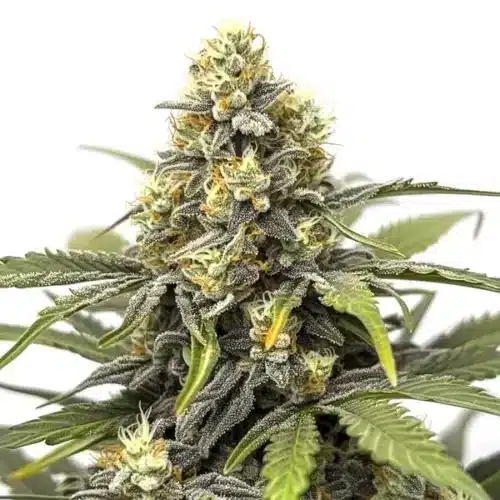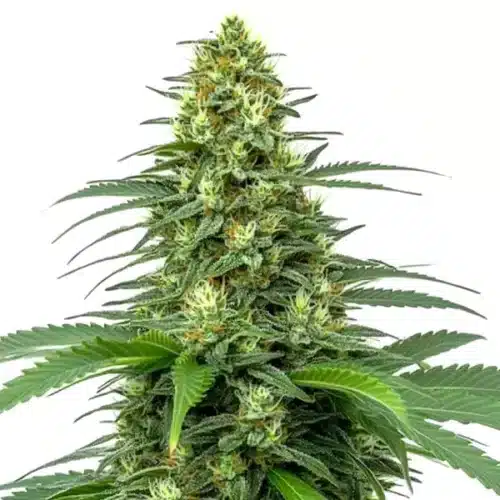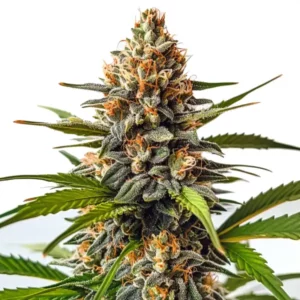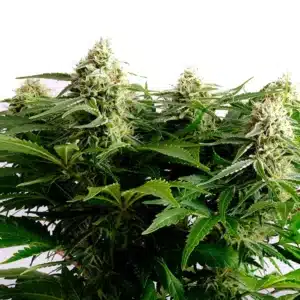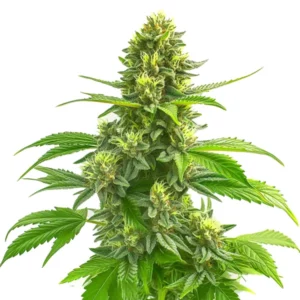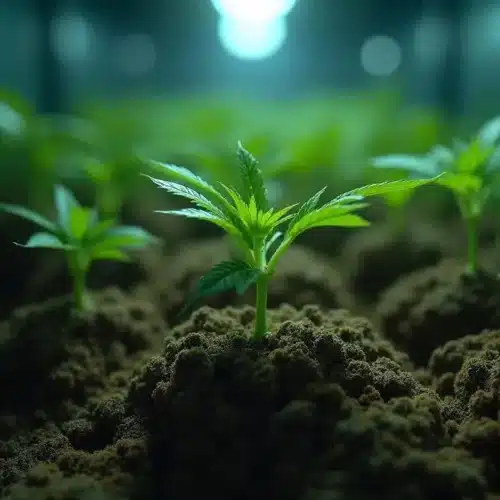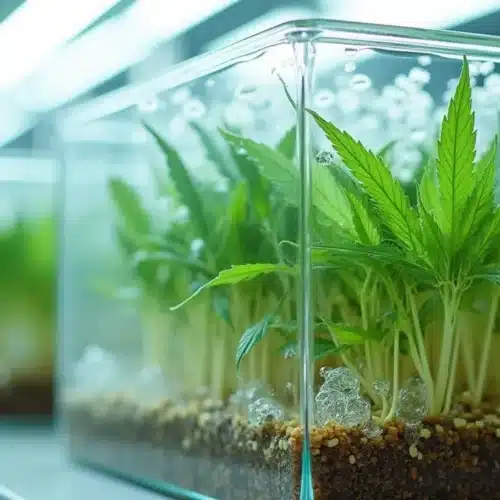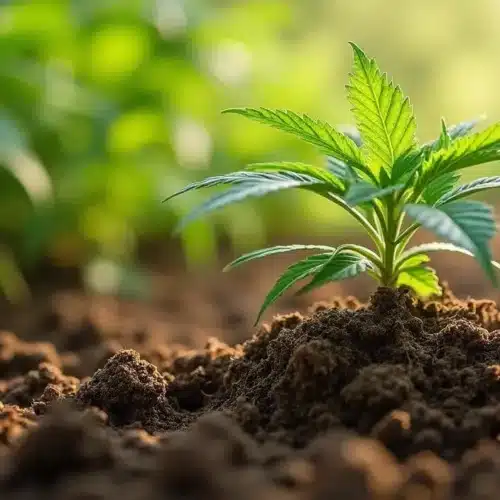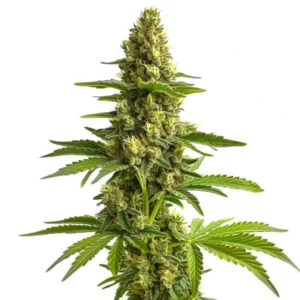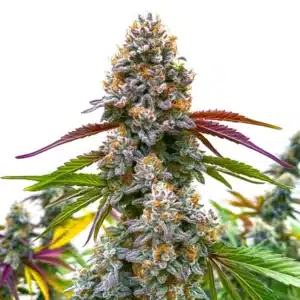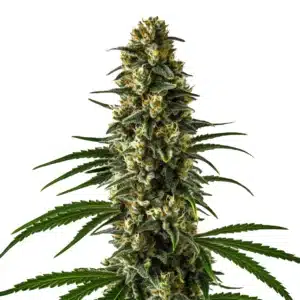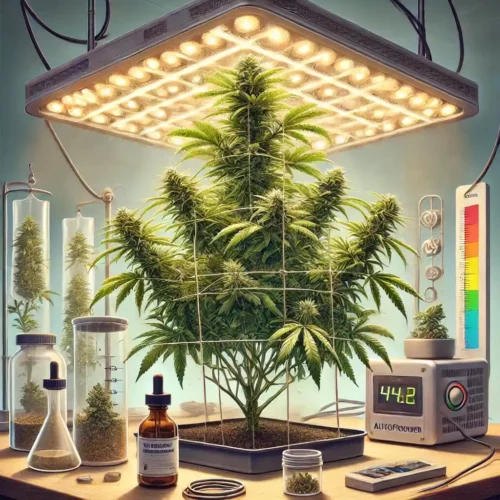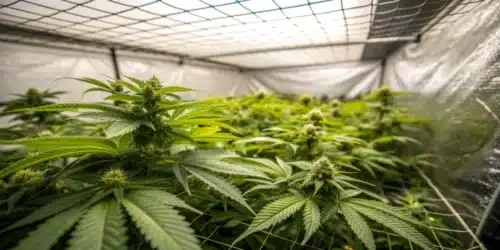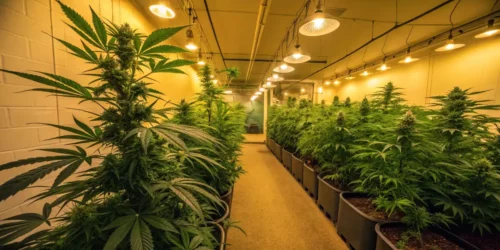Cannabis cultivation has evolved dramatically over the years, with growers constantly seeking innovative techniques to maximize yield and potency. Among these, lollipopping stands out as a pivotal method. This article delves deep into the essence of selective pruning, offering a step-by-step guide, comparisons with other pruning methods, and invaluable tips from seasoned cultivators.
What is Lollipopping?
Lollipopping is a pruning technique used in cannabis cultivation where lower branches and leaves that receive little to no light are removed. This method encourages the plant to focus its energy on the upper, more light-exposed parts, leading to more significant bud development and overall yield.
Recommended Strains
Amnesia
 THC: 15% - 20%
THC: 15% - 20% Type of seed: Feminized
Type of seed: Feminized Phenotype: Mostly Sativa
Phenotype: Mostly Sativa Day to flower: 8 - 10 weeks
Day to flower: 8 - 10 weeks
Amnesia Auto
 THC: 10% - 19%
THC: 10% - 19% Type of seed: Autoflowering
Type of seed: Autoflowering Phenotype: Mostly Sativa
Phenotype: Mostly Sativa Day to flower: 10 - 12 weeks
Day to flower: 10 - 12 weeks
Promos & Deals
Importance in Cannabis Cultivation
The strategic importance of selective pruning lies in its ability to optimize plant health and resource allocation. By eliminating unnecessary foliage, the plant can dedicate more resources to flowering, resulting in denser, higher-quality buds.
Cannabis Cultivation
Basics of Growing Cannabis
Growing cannabis requires knowledge of plant biology, nutrient requirements, light cycles, and environmental factors. Successful cultivation begins by choosing the right strain and ensuring ideal growing conditions.
Key Techniques for Optimizing Growth
Besides lollipopping, techniques such as topping, super cropping, and SCROG (Screen of Green) are vital for maximizing cannabis plant potential. Each technique has its place in a grower’s toolkit, depending on the desired outcome.
The Science Behind Lollipopping
How Lollipopping Affects Plant Growth
Lollipopping, a specialized pruning technique in cannabis cultivation, significantly influences plant growth by redirecting the plant’s energy from lower, less productive areas to the upper parts of the plant that receive more light. This strategic removal of lower branches and leaves ensures that the plant’s resources are concentrated on developing robust buds at the top, where light exposure is maximized. This method leverages the plant’s natural tendencies for resource allocation, optimizing growth where it counts.
Plants, including cannabis, operate on a principle known as “apical dominance,” where the main, central stem of the plant grows more vigorously than the side branches. This dominance is regulated by hormones, primarily auxins, which are produced in the tip of the plant. When lower branches are removed, the concentration of these growth hormones shifts towards the top of the plant, stimulating the development of buds that are larger and more potent.
Benefits for Yield and Potency
The benefits of selective pruning extend beyond simple aesthetics or plant management. By focusing the plant’s energy on the development of the upper buds, growers can achieve a noticeable increase in yield and potency. This technique can lead to denser, more resinous buds, as the plant can allocate more carbohydrates and nutrients to a smaller number of bud sites. This increased allocation not only boosts the size of each bud but also enhances its quality, with higher concentrations of cannabinoids and terpenes, which are crucial for the plant’s aroma, flavor, and therapeutic properties.
Moreover, selective pruning improves air circulation and light exposure throughout the plant. These conditions are vital for reducing the risk of mold and mildew, common problems in dense cannabis canopies. By removing lower growth, which is often shaded and prone to higher humidity levels, the risk of these issues is significantly reduced, promoting healthier plant development. Enhanced light penetration ensures that the remaining bud sites receive ample light, critical for photosynthesis and the plant’s overall energy production.
Optimizing Photosynthesis and Energy Efficiency
The science of selective pruning also encompasses optimizing the plant’s photosynthetic efficiency. Photosynthesis is the process by which plants convert light energy into chemical energy, stored as sugars, which are then used to fuel growth and development. By reducing the number of leaves, particularly those that do not receive adequate light and thus contribute less to the photosynthesis process, the plant can become more efficient. It avoids expending energy on leaves that offer little return on investment in terms of energy capture and conversion.
Enhancing Nutrient Uptake
Lollipopping can also influence the plant’s nutrient uptake. With fewer leaves and branches to support, the plant can more effectively allocate its absorbed nutrients from the soil or growing medium to the development of its flowers. This targeted nutrient delivery system supports the growth of larger, more nutrient-dense buds, ultimately leading to a more bountiful and potent harvest.
Step-by-Step Guide to Lollipopping
Lollipopping is a critical technique in cannabis cultivation that, when done correctly, can significantly enhance the yield and quality of your harvest. This detailed guide will take you through the process, ensuring you understand every step to achieve optimal results.
Preparing Your Plants
Before you begin the selective pruning process, it’s essential to ensure your plants are in the right stage of growth and health. Ideally, plants should be vigorous and entering the late vegetative stage or early flowering stage. This timing is crucial because it allows the plant to recover from the stress of pruning before putting all its energy into flower production.
- Assess Plant Health: Check for any signs of stress, disease, or nutrient deficiencies. Healthy plants will recover from pruning more efficiently.
- Choose the Right Time: Begin selective pruning when your plants are transitioning from the vegetative stage to the flowering stage. This period is when the plant starts focusing its energy on bud production.
When to Lollipop Your Cannabis
Timing is everything with selective pruning. The optimal window is just before the flowering stage for photoperiod strains or in the late vegetative stage for autoflowers. This timing ensures the plant can direct its energy towards the buds that will receive the most light.

Detailed Lollipopping Process
The actual process of selective pruning involves selective pruning to remove lower growth that doesn’t receive adequate light or contributes little to the overall yield. Follow these steps for a successful selective pruning:
- Sanitize Your Tools: Always use sharp, sterilized pruning shears or scissors to prevent introducing any pathogens to the plant.
- Identify Lower Growth: Look for branches and leaves lower on the plant that are shaded or not receiving enough light. These are your targets for removal.
- Start Pruning: Begin by carefully removing the identified lower branches and leaves. Make clean cuts close to the stem to minimize stress on the plant. It’s essential to be judicious in your pruning; removing too much can stress the plant, while too little won’t provide the desired benefits.
- Focus on Airflow and Light Penetration: As you prune, consider the overall structure of your plant. The goal is to open up the canopy to improve airflow and light penetration to the remaining bud sites. This step is crucial for preventing mold and pests and for ensuring that energy is concentrated on the most productive parts of the plant.
- Monitor and Maintain: After selective pruning, monitor your plants closely for signs of stress or recovery issues. Ensure they have adequate water, nutrients, and light to recover from the pruning and to thrive during the flowering stage.
Post-Lollipopping Care
After selective pruning your plants, it’s vital to provide them with the care they need to recover and flourish:
- Watering: Check the soil moisture levels. Pruned plants may require slightly less water initially, as there’s less foliage transpiring moisture.
- Nutrients: Continue with your feeding schedule, focusing on bloom nutrients that support flower development.
- Light Adjustment: If you’re growing indoors, adjust your lights to ensure the remaining canopy receives optimal light intensity.
- Observation: Keep an eye on your plants for any signs of stress or pest issues. The days following pruning are critical for recovery.
Comparing Lollipopping with Other Pruning Techniques
Pruning is an essential aspect of cannabis cultivation, aimed at optimizing plant health, improving yield, and enhancing bud quality. While lollipopping is a popular method, it’s just one of several pruning techniques available to growers. The nuances and applications of these methods is crucial for tailoring your cultivation approach to meet specific goals. This section delves into how selective pruning compares with other pruning techniques, such as topping, defoliation, and super cropping, providing a comprehensive perspective on their benefits and best practices.
Lollipopping vs. Topping
- Definition and Purpose:
- Lollipopping: Involves removing lower growth to concentrate energy on upper buds, enhancing light penetration and airflow.
- Topping: Entails cutting the top of the main stem to encourage the growth of two main colas instead of one, promoting a bushier plant structure and more even canopy.
- Benefits:
- Lollipopping: Increases yield and potency of top buds, reduces the risk of mold and pests by improving air circulation.
- Topping: Creates a more uniform canopy, allowing for better light distribution across more bud sites, potentially increasing overall yield.
- Ideal Use:
- Lollipopping: Best for indoor setups or controlled environments where managing light distribution and air flow is crucial.
- Topping: Suitable for both indoor and outdoor grows, especially when aiming for a wide, bushy plant structure.
Lollipopping vs. Defoliation
- Definition and Purpose:
- Defoliation: The selective removal of leaves to improve light penetration and airflow within the canopy, without necessarily removing entire branches.
- Benefits:
- Lollipopping: Targets the lower part of the plant to redirect energy upwards, specifically benefiting the development of colas.
- Defoliation: Can be performed at various stages of growth to manage light exposure and air movement throughout the entire plant, not just the lower sections.
- Ideal Use:
- Lollipopping: Particularly effective in dense, indoor grows where lower branches receive little to no light.
- Defoliation: Versatile, can be used in both indoor and outdoor grows. It’s beneficial for managing large, leafy plants that block light from penetrating the canopy.
Lollipopping vs. Super Cropping
- Definition and Purpose:
- Super Cropping: A high-stress training technique that involves gently bending and slightly damaging the stems to create stronger, more resilient plants. This method encourages increased cannabinoid production and redirects growth hormones to lower branches.
- Benefits:
- Lollipopping: Simplifies plant maintenance, focusing energy on top-producing parts for better quality buds.
- Super Cropping: Enhances the overall strength and resilience of the plant, potentially leading to increased yields across the entire plant, not just the top.
- Ideal Use:
- Lollipopping: Best for growers looking to maximize the quality and yield of their upper buds, with less concern for lower growth.
- Super Cropping: Suitable for experienced growers seeking to increase their plant’s overall yield and potency through stress training, without reducing plant mass.
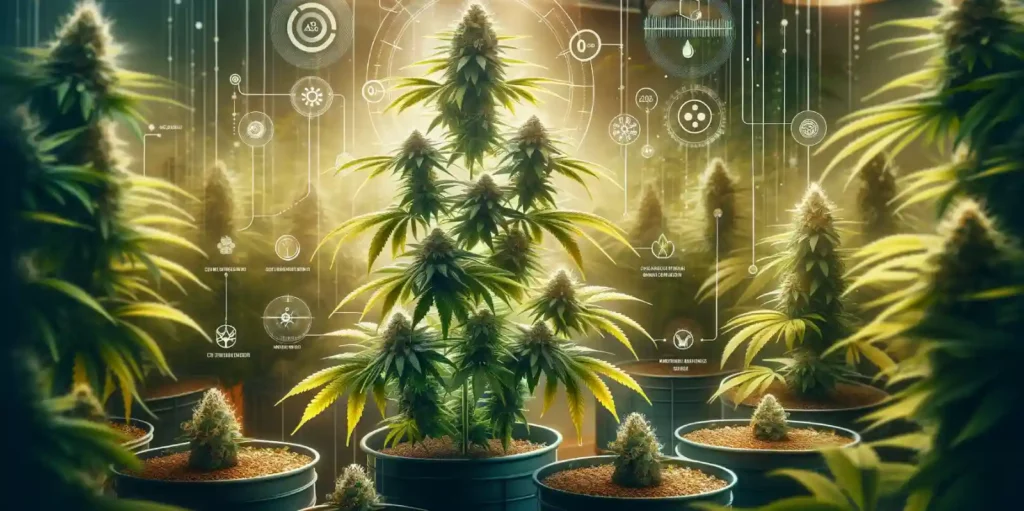
Lollipopping and Plant Health
Lollipopping is not just a technique aimed at increasing yield and potency; it also plays a significant role in promoting plant health. The relationship between selective pruning and plant health, growers can make informed decisions to manage their crops effectively. This section explores how selective pruning influences disease resistance, pest management, and the overall vitality of cannabis plants.
Enhancing Disease and Pest Resistance
One of the primary benefits of selective pruning is its ability to improve air circulation around the plant’s canopy. This increased airflow is crucial for minimizing the risk of fungal diseases, such as powdery mildew and botrytis (bud rot), which thrive in stagnant, humid conditions. By removing lower growth that contributes to dense foliage, selective pruning helps maintain a drier microclimate around the plant, reducing the likelihood of these pathogens taking hold. For more detailed information on managing spider mites specifically, visit our guide on spider mites on cannabis plants.
Moreover, selective pruning aids in pest management. Many pests, including spider mites and aphids, prefer the sheltered environment provided by dense foliage. By thinning out the plant, selective pruning makes it harder for pests to establish colonies and spread throughout the crop. This not only helps in keeping the existing pest population at bay but also makes it easier to spot and treat infestations early on.
Improving Nutrient and Water Efficiency
Lollipopping also impacts the plant’s efficiency in using nutrients and water. By reducing the number of leaves, the plant has fewer sites requiring nutrient and water uptake. This concentration of resources allows the remaining parts of the plant, especially the buds, to receive a more significant share of these essential inputs. The result is a more efficient use of resources, contributing to the development of healthier, more robust plants capable of producing higher-quality buds.
The removal of unnecessary foliage means that the plant’s root system can focus on supporting the growth and development of the upper parts of the plant. This targeted allocation of resources can lead to an increase in the size and quality of the buds, as the plant can dedicate more energy to flower production rather than maintaining a larger number of leaves and branches.
Facilitating Better Light Penetration
Lollipopping directly impacts the plant’s access to light, a critical component of photosynthesis. By removing lower branches and leaves that receive little to no light, the technique ensures that the remaining foliage has better exposure. This optimized light penetration enhances the plant’s photosynthetic efficiency, leading to healthier growth and more vigorous bud development.
The improved light exposure also contributes to a more uniform canopy, ensuring that each bud site has the potential to develop fully. This uniformity is particularly beneficial in indoor growing setups, where artificial lighting provides the primary energy source for photosynthesis. By ensuring that light reaches deeper into the plant, selective pruning supports the overall energy balance within the plant, promoting healthier growth and development.
Strengthening Plant Structure
Lollipopping can contribute to a stronger plant structure. By removing the lower, often weaker branches, the plant can allocate more resources to strengthening the remaining branches. This results in a more resilient plant capable of supporting the weight of larger buds. Additionally, a well-structured plant is less likely to suffer from mechanical stress or damage, further contributing to its health and vitality.
Lollipopping in Different Growing Environments
Lollipopping, while universally beneficial across various cannabis cultivation methods, requires adaptation to the specifics of each growing environment. Whether in controlled indoor setups, expansive outdoor grows, or specialized systems like hydroponics and soil, how selective pruning is implemented can significantly influence its effectiveness. This section explores the nuances of applying selective pruning across different growing environments, offering insights into maximizing its benefits regardless of where or how you grow your cannabis.
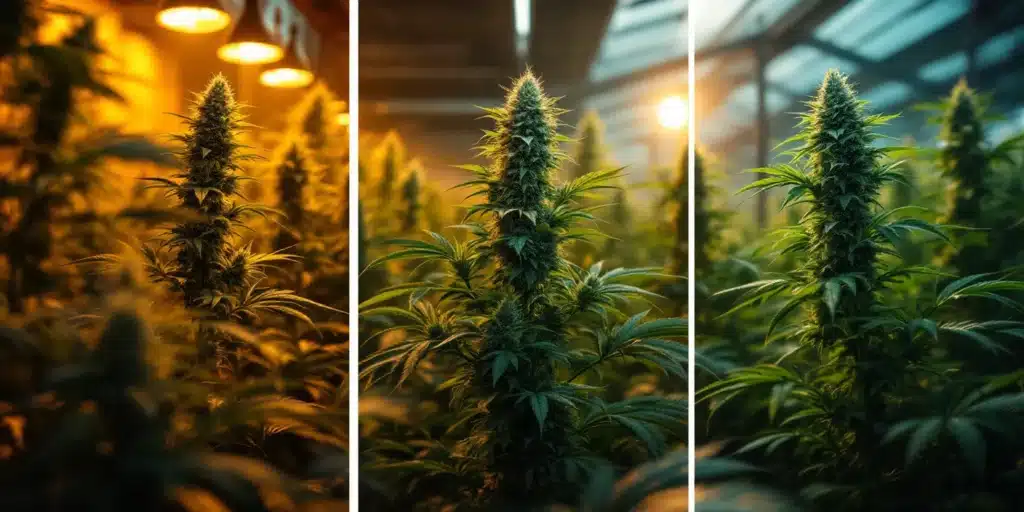
Lollipopping in Indoor Cultivation
Indoor cultivation offers the most control over environmental conditions, making selective pruningespecially effective. Growers can manipulate lighting, temperature, and humidity to suit the needs of their plants, ensuring optimal conditions for recovery and growth post-lollipopping. In these settings, selective pruning helps maximize the use of artificial light, which can be directed more efficiently to the top canopy where it’s most needed. By removing lower growth, growers ensure that the light penetrates deeper into the canopy, benefiting the development of top colas.
Key Considerations for Indoor Growers:
- Light Distribution: Adjust lighting systems to ensure even coverage across the pruned canopy, avoiding hot spots or areas of shadow.
- Climate Control: Monitor and adjust humidity and temperature levels post-pruning to mitigate stress and support recovery.
- Vertical Space Utilization: Lollipopping can help maximize vertical growing space, allowing for taller plants with more significant top growth.
Lollipopping in Outdoor Cultivation
Outdoor cultivation presents a different set of challenges and advantages for selective pruning. The main benefit lies in promoting airflow and sunlight penetration in a naturally variable environment. Outdoor plants typically grow larger and can become denser, making selective pruning crucial for managing disease and pest risks. However, growers must consider the timing of pruning carefully to coincide with the plant’s natural response to seasonal light changes.
Key Considerations for Outdoor Growers:
- Environmental Factors: Be mindful of weather changes post-lollipopping; excessive rain or high winds can stress pruned plants.
- Pest Management: Enhanced airflow from selective pruning can help deter pests, but regular monitoring is essential, especially in open environments where pests can easily migrate.
- Natural Light Utilization: Prune to maximize sunlight exposure across the plant, especially in latitudes with varying sun angles throughout the growing season.
Lollipopping in Hydroponics and Soil
The growing medium—hydroponics vs. soil—also influences the approach to selective pruning. Hydroponic systems, known for faster growth rates and higher yields, benefit significantly from lollipopping due to the efficient nutrient delivery directly to the roots. In soil, the technique helps manage energy allocation more effectively, directing the plant’s efforts towards top growth and bud production.
Key Considerations for Hydroponic Growers:
- Nutrient Delivery: Post-lollipopping, adjust nutrient concentrations to cater to the plant’s changed needs, focusing on bloom nutrients that support flower development.
- Water Usage: Monitor water uptake closely, as pruned plants may exhibit altered water needs.
Key Considerations for Soil Growers:
- Root Health: Lollipopping can stimulate root development as the plant adjusts its growth focus. Ensure the soil is well-aerated and nutrient-rich to support this growth.
- Pest and Disease Management: Soil cultivation may require more attention to pest and disease management post-lollipopping, especially in dense outdoor grows.

